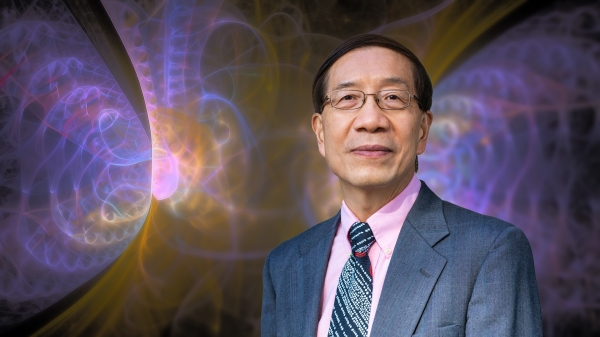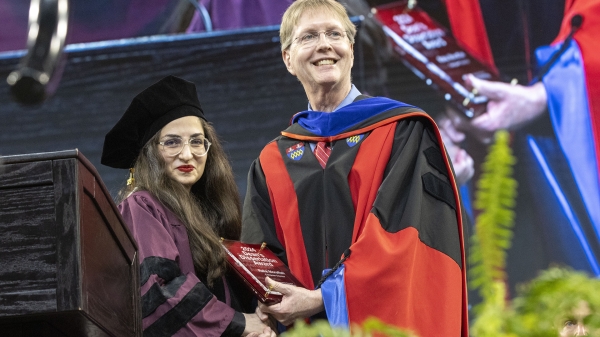Editor’s note: This story is being highlighted in ASU Now’s year in review. Read more top stories from 2020.
Discrimination knows no boundaries. Unfortunately, the fields of STEM are no exception. STEM fields have been plagued by structural and systemic forces that have been highlighted by recent events. For us, these forces result in discrimination, blocked opportunities, silenced voices and narrow perspectives within our disciplines that ultimately limit our progress as a society. We are at a critical juncture where we must address and rectify the issues of systemic discrimination and social injustice. This is salient not only in public life and law enforcement, which are currently drawing much needed attention, but as it relates to STEM fields as well.
Arizona State University acknowledges and supports #ShutDownSTEM, a grassroots effort of transitioning “to a lifelong commitment of actions to eradicate anti-black racism in academia and STEM.” That is a powerful and important call to action, and one that resonates at ASU because of our charter and that our university measures itself “not by whom it excludes, but by whom it includes and how they succeed.” This includes people of all races, ethnicities, abilities, genders and sexual orientations; anyone with capability who desires to pursue and succeed in their field of choice.
Because of that focus, we have made much progress in STEM fields at ASU. Since the 2008-2009 academic year, the number of students receiving STEM degrees has increased 166%. Although a positive indicator, we need to do more. Among our growing body of STEM students, specific segments remain underrepresented. In fall 2019, for example, of the total number of students enrolled in STEM disciplines, 3.9% identified as black students, 37.4% as female students and 33.1% as other underrepresented students.
Many studies have shown there is no shortage of diversity among students enrolling in STEM programs. In this case, the issue is retention. A common reason black students and other underrepresented students leave STEM majors is they do not feel welcomed, seen and supported. This is damaging to STEM fields, our institutions and society at large. We need to play a more active role in full inclusion of black and other underrepresented STEM students. Students need to feel a sense of community and belonging; they need to believe that faculty care about their success. They need us to be allies.
Today, June 10, is #ShutDownSTEM and an opportunity for all of us in STEM disciplines and academia in general to take time to focus on eliminating anti-black racism. We would like to encourage our community to participate through self-education, listening, reflection and discussion with colleagues and students. A suggested set of resources that can bring those issues to life can be found below. We welcome ideas that emerge from these conversations so that we can advance them together.
STEM fields present plenty of challenges in terms of the curricula, concepts and ideas that require mastery. STEM with walls around it is nearly impossible to surmount. Let’s make sure we work together to eliminate racial inequities and support black students, faculty and staff to pursue their dreams and their goals wherever they may lie. All of us, our disciplines and the world will be better for it.
— co-signed by deans Kyle Squires, Duane Roen, Nancy Gonzales, Todd Sandrin, Steven Tepper, Pat Kenney, Chris Boone, Pardis Mahdavi, Elizabeth Wentz, Judith Karshmer, Deborah Helitzer, Carole Basile, Amy Hillman, Mark Jacobs, Jonathan Koppell and Sanjeev Khagram, director Dave Guston, vice provost Sukhwant Jhaj and university librarian Jim O'Donnell
Resources
- LaShyra Nolan's article “This is what I want to tell my white professors when they ask, ‘How are you today?’” on HuffPost.
- Bryan Dewsbury and Mays Imad's virtual book club on Ibram X. Kendi's book "How to Be an Antiracist" and how to enact its principles in teaching.
- Jamilah Pitts' article "Don’t say nothing" on the Teaching Tolerance website.
- Five things educators can do to address bias in their school (written with K-12 in mind, but the recommendations also apply to college teaching) on the NEA EdJustice website.
- "Avoiding unrecognized racist implications arising from teaching genetics," by Mike Klymkowsky, on the Bioliteracy website.
- "What black faculty need from our white and Asian allies," by Nina T. Harawa, on Inside Higher Ed.
- "Race matters," by David Asai, on Cell Press.
- "White privilege: Unpacking the invisible knapsack," by Peggy McIntosh, on the American College Personnel Association website.
- "The American nightmare," by Ibram X. Kendi, in The Atlantic.
- "75 things white people can do for racial justice," by Corinne Shutack, on Medium.
- "Scientists push against barriers to diversity in the field sciences," by John Pickrell, on Science.
- ASU’s Advance Program on equity, inclusion, diversity and belonging.
Photo by iStock
More Science and technology
Extreme HGTV: Students to learn how to design habitats for living, working in space
Architecture students at Arizona State University already learn how to design spaces for many kinds of environments, and now they can tackle one of the biggest habitat challenges — space architecture…

Human brains teach AI new skills
Artificial intelligence, or AI, is rapidly advancing, but it hasn’t yet outpaced human intelligence. Our brains’ capacity for adaptability and imagination has allowed us to overcome challenges and…

Doctoral students cruise into roles as computer engineering innovators
Raha Moraffah is grateful for her experiences as a doctoral student in the School of Computing and Augmented Intelligence, part of the Ira A. Fulton Schools of Engineering at Arizona State University…
